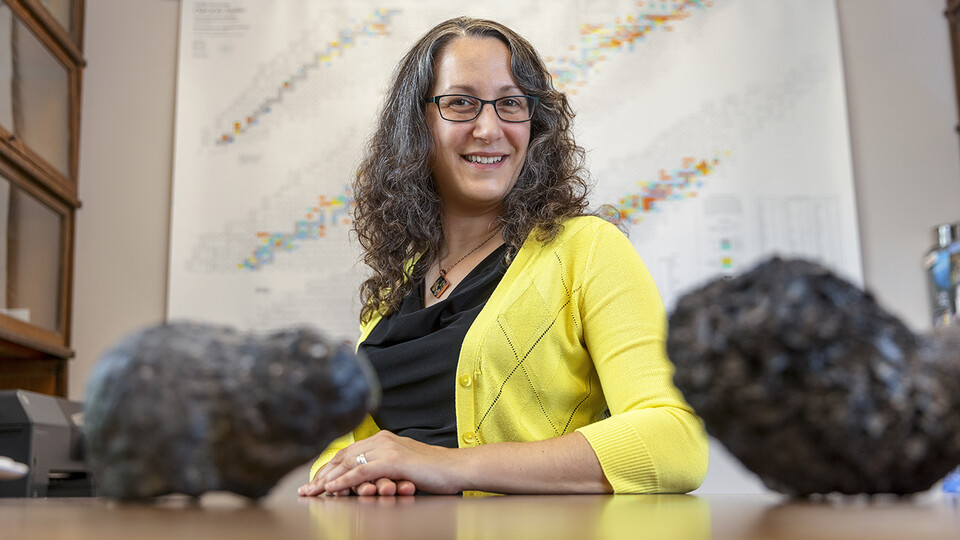
by Tiffany Lee | Research and Economic Development
Most people find volcanoes fascinating. But even the world’s best scientists don’t fully understand exactly what happens deep inside the Earth to trigger them, why they happen in certain locations, and what processes generate the magma that eventually breaks through the surface as lava.
With a five-year, nearly $700,000 grant from the National Science Foundation’s Faculty Early Career Development Program, Husker geochemist Lynne Elkins is developing a tool that may shed light on some of those processes, particularly those that govern the makeup and movement of magma, the molten rock located deep under the Earth’s surface. The project will produce a publicly available, open-source computer modeling program to calculate the expected compositions of magma that result from partial melting of the Earth’s mantle layer, which is where most magmas originate. The calculation models focus on predicting trace quantities of uranium-series isotopes in lavas, a type of geochemistry measurement that traces the nature and timing of Earth’s melting processes.
Developing a more comprehensive understanding of those processes will provide scientists important clues about how magma generation is linked to plate tectonics, the formation of the Earth’s crust and the overall workings of the natural world.
“Understanding how the planet works as a whole is important to society,” said Elkins, assistant professor of Earth and atmospheric sciences. “The fundamental question here is, ‘How does the planet function?’ Developing better tools with computer coding makes the answers to this question more accessible to the broader scientific community.”
Read more:
https://news.unl.edu/newsrooms/today/article/elkins-developing-modeling-tool-to-study-makeup-movement-of-magma/